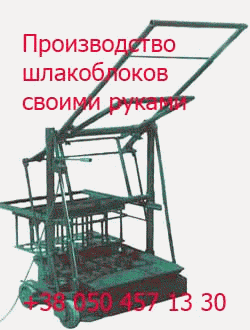After hydrolysis, the liquid phase of the titanium oxide hydrate suspension contains 20-28% H2SO4 and various amounts of dissolved sulfates, depending on the raw material. The hydrate is filtered off from the solution (p4) (weak acid), and washed with water or dilute acid. Even with acid washing, too many heavy metal ions are adsorbed on […]
Архивы рубрики ‘Industrial Inorganic Pigments’
Hydrolysis
 20 сентября, 2015
20 сентября, 2015  Pokraskin
Pokraskin Titanium oxide hydrate is precipitated by hydrolysis at 94-110 °C. Other sulfuric- acid-soluble components of the raw material are precipitated simultaneously, mainly niobium as its oxide hydrate. Hydrolysis is carried out in brick-lined, stirred tanks (n) into which steam is passed. The hydrolyzate does not have any pigment properties. The properties of the hy — […]
Crystallization
 20 сентября, 2015
20 сентября, 2015  Pokraskin
Pokraskin The solutions from slag digestion contain 5-6 wt.% FeSO4, and those from ilmenite digestion 16-20 wt.% FeSO4 after reduction of the Fe3+. The ilmenite solution is cooled under vacuum to crystallize and separate FeSO4 • 7 H2O (j) and reduce the quantity of FeSO4 discharged with the waste acid. The concentration of the TiO2 in […]
Clarification
 20 сентября, 2015
20 сентября, 2015  Pokraskin
Pokraskin All undissolved solid material must be removed as completely as possible from the solution. The most economical method is to employ preliminary settling in a thickener (g), followed by filtration of the sediment with a rotary vacuum drum filter (h) or a filter press. The filtrate and the supernatant from the thickener are passed through […]
Redigestion: Dissolution and Reduction
 20 сентября, 2015
20 сентября, 2015  Pokraskin
Pokraskin The cake obtained by digestion is dissolved in cold water or in dilute acid recycled from the process. A low temperature must be maintained (<85 °C) to avoid premature hydrolysis, especially with the product from ilmenite. Air is blown in to agitate the mixture during dissolution. With the ilmenite product, the TiO2 concentration of the […]
Sulfate Method
 19 сентября, 2015
19 сентября, 2015  Pokraskin
Pokraskin The sulfate method is summarized in Figure 2.2. Grinding The titanium-bearing raw materials are dried to a moisture content of < 0.1%. Drying is mainly intended to prevent heating and premature reaction on mixing with sulfuric acid. The raw materials are ground in ball mills to give a mean particle size of <40 pm. Digestion […]
Production
 19 сентября, 2015
19 сентября, 2015  Pokraskin
Pokraskin Titanium dioxide pigments are produced commercially using two different processes. The older sulfate process starts with a digestion reaction of the titanium-containing raw material (ilmenite or titanium slag) with concentrated sulfuric acid at 150-220 °C resulting in the,,black liquor“. Relatively pure TiO2 dihydrate is precipitated by hydrolysis of this sulfate solution, which contains colored heavy […]
Synthetic Rutile
 18 сентября, 2015
18 сентября, 2015  Pokraskin
Pokraskin In contrast to ilmenite, only a small number of rutile deposits can be mined economically, and the price of natural rutile is therefore high. Consequently, many different processes have been developed to remove the iron from ilmenite concentrates without changing the grain size of the mineral because this is highly suitable for the subsequent fluidized-bed […]
Synthetic Raw Materials
 18 сентября, 2015
18 сентября, 2015  Pokraskin
Pokraskin Increasing demand for raw materials with high TiO2 contents has led to the development of synthetic TiO2 raw materials. In all production processes, iron is removed from ilmenites or titanomagnetites. Titanium Slag The metallurgical process for removing iron from ilmenite is based on slag formation in which the iron is reduced by anthracite or coke […]
Ore Preparation
 18 сентября, 2015
18 сентября, 2015  Pokraskin
Pokraskin Most of the world’s titanium ore production starts from heavy mineral sands. Figure 2.1 shows a scheme of the production process. The ilmenite is usually associated with rutile and zircon, so that ilmenite production is linked to the recovery of these minerals. If geological and hydrological conditions permit, the raw sand (usually containing 3-10% heavy […]
 Опубликовано в рубрике
Опубликовано в рубрике 
